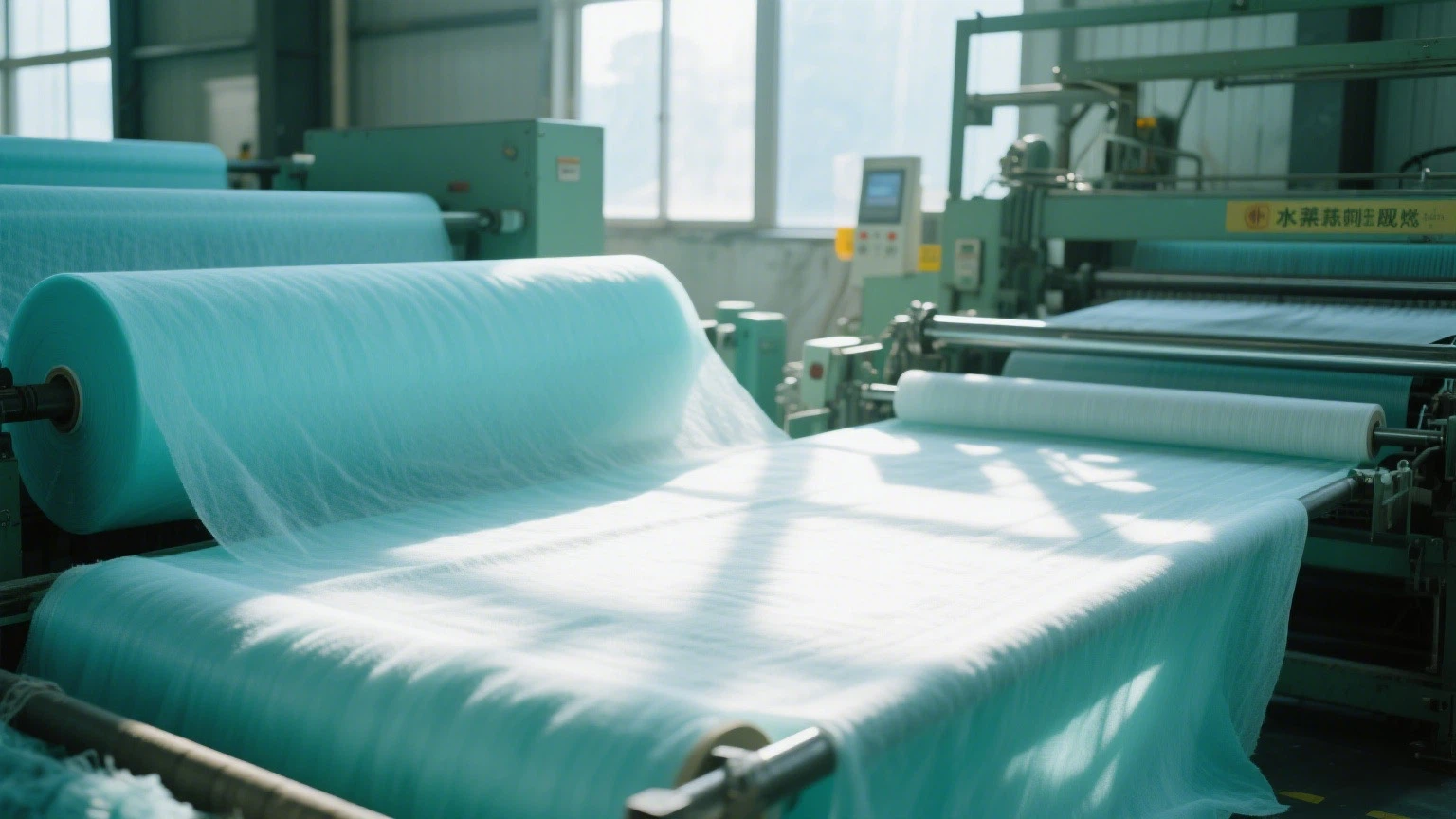Differences Between Lyocell Fiber and Viscose Fiber in Spunlace Non-Woven Fabrics




Although both lyocell fiber and viscose fiber are used as raw materials for spunlace non-woven fabrics, they differ significantly in raw material sources, production processes, performance characteristics, and application scenarios. The specific differences are analyzed as follows:
I. Comparison of Raw Materials and Production Processes
1. Lyocell Fiber
- Raw Materials: Made from natural wood pulp (such as eucalyptus, pine, etc.), with renewable sources.
- Production Process:
·Uses the solvent spinning method (NMMO method), where wood pulp is dissolved in the organic solvent N-methylmorpholine-N-oxide (NMMO), then spun and solidified.
·Process features: The solvent can be recycled (recovery rate >99%), causing almost no pollution. It is an eco-friendly production process that aligns with sustainable development.
2. Viscose Fiber
- Raw Materials: Also primarily uses wood pulp (such as cotton linters, bamboo, wood, etc.), but with broader raw material adaptability; some products use recycled fibers.
- Production Process:
·Adopts the viscose method (chemical dissolution method), where wood pulp undergoes multiple chemical treatments including alkalization, aging, and xanthation to form cellulose xanthate, which is then dissolved in a dilute alkali solution to make spinning solution.
·Process features: Chemical reagents like carbon disulfide are used in production, prone to generating wastewater and exhaust gas, requiring high environmental protection treatment costs.
II. Differences in Fiber Properties
1. Physical Strength
- Lyocell Fiber:
·High dry and wet strength (dry strength ~4.0–4.5 cN/dtex, wet strength retention >80%), difficult to break, suitable for non-woven products requiring high strength.
·Good fiber toughness and abrasion resistance, making non-woven fabrics durable.
- Viscose Fiber:
·Moderate dry strength (~2.5–3.0 cN/dtex), but wet strength decreases significantly (wet strength retention only 50%–60%), prone to deformation or damage when exposed to water.
·Soft but low-strength fibers, suitable for scenarios with low strength requirements.
2. Moisture Absorption and Air Permeability
- Lyocell Fiber:
·Good moisture absorption (moisture regain ~11%–12%) and excellent air permeability. Non-woven fabrics are skin-friendly, suitable for products in contact with skin.
- Viscose Fiber:
·Stronger moisture absorption (moisture regain ~13%–15%), but air permeability is slightly inferior to lyocell. Excessive moisture absorption may affect comfort during long-term use.
3. Hand Feel and Softness
- Lyocell Fiber: Smooth fiber surface, soft and delicate hand feel. Non-woven fabrics feel close to natural cotton, suitable for high-end medical or hygiene products.
- Viscose Fiber: Soft hand feel, but the fiber cross-section is serrated, with a slightly higher friction coefficient, making it less soft than lyocell.
4. Chemical and Washing Resistance
- Lyocell Fiber: Good acid and alkali resistance, can withstand routine disinfection (e.g., medical alcohol, iodine), and has strong washing resistance, maintaining stability after multiple washes.
- Viscose Fiber: Poor chemical resistance, easily damaged by strong acids or alkalis, weak washing resistance, and significant strength decline after repeated washing.
III. Application Differences in Spunlace Non-Woven Fabrics
1. Application Scenarios of Lyocell Fiber
- High-End Medical Field: Such as surgical dressings and wound care pads, due to high strength, skin-friendliness, no irritation, and biodegradability, meeting medical-grade hygiene standards.
- Eco-Friendly Hygiene Products: Such as degradable wet wipes and inner layers of baby diapers, leveraging its eco-friendly process and natural properties to cater to consumers' demand for green products.
- Industrial Filter Materials: Used in liquid filtration and industrial wiping cloths due to high strength and corrosion resistance.
2. Application Scenarios of Viscose Fiber
- General Hygiene Products: Such as low-cost wet wipes, bottom layers of sanitary napkins, and disposable rags, suitable for mass consumer products with low performance requirements due to strong moisture absorption and low cost.
- Decorative and Packaging Materials: Such as wallpaper base fabrics and lightweight packaging cotton, utilizing their softness and easy processability.
- Low-End Medical Auxiliary Materials: Such as non-contact wound care pads, but long-term contact with liquids should be avoided.
IV. Cost and Environmental Protection Comparison
- Cost: Lyocell fiber has complex production processes and high equipment investment, with costs ~1.5–2 times that of viscose fiber; viscose fiber has mature processes and low raw material costs, offering high cost-effectiveness.
- Environmental Protection: Lyocell fiber production is pollution-free, with recyclable solvents, and the fiber is fully biodegradable; viscose fiber production requires treatment of chemical waste liquid, posing greater environmental pressure, and the fiber degrades more slowly.
V. Summary: How to Choose?
- Choose Lyocell Fiber: Prioritize it for high strength, high environmental protection, wet resistance, and high-end applications (e.g., medical, degradable products).
- Choose Viscose Fiber: Opt for it if focusing on cost control, moisture absorption, and the product use scenario has low strength requirements (e.g., disposable wet wipes, general hygiene materials).
Based on the above comparison, lyocell fiber or viscose fiber can be reasonably selected according to the specific uses, performance requirements, and cost budget of spunlace non-woven fabrics.
HANGZHOU JIEKANG NEW MATERIAL CO., LTD is located in Lishui City, Zhejiang Province, China. It specializes in the production of spunlace non - woven materials made of lyocell fiber, including materials such as lyocell + polyester, lyocell + polyester + printing. 100% lyocell is degradable, and materials like lyocell + wood pulp are also degradable. Additionally, lyocell + wood pulp flushable materials are available. It leads the industry in making contributions to environmental protection. You can feel free to consult us if you have any needs.






